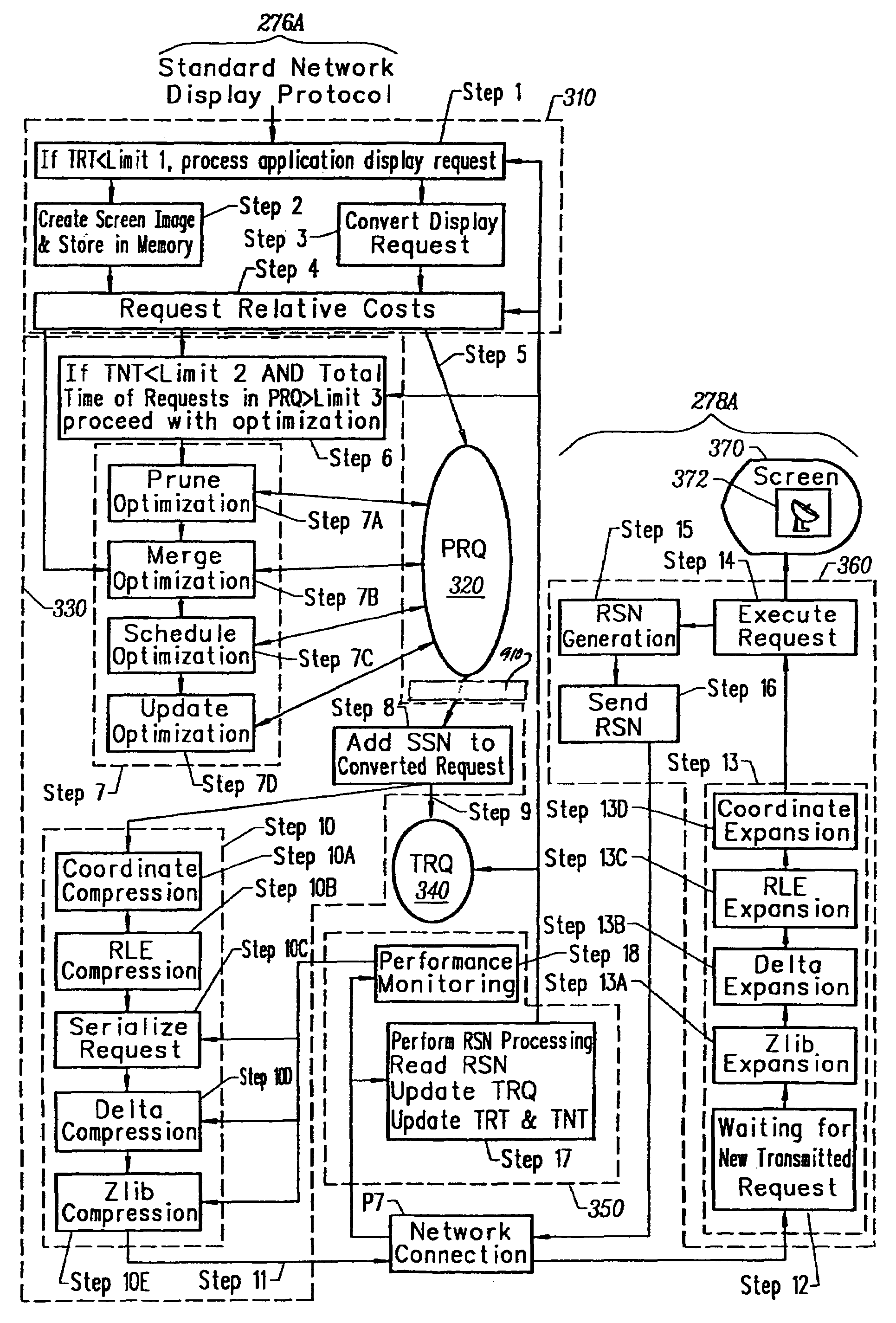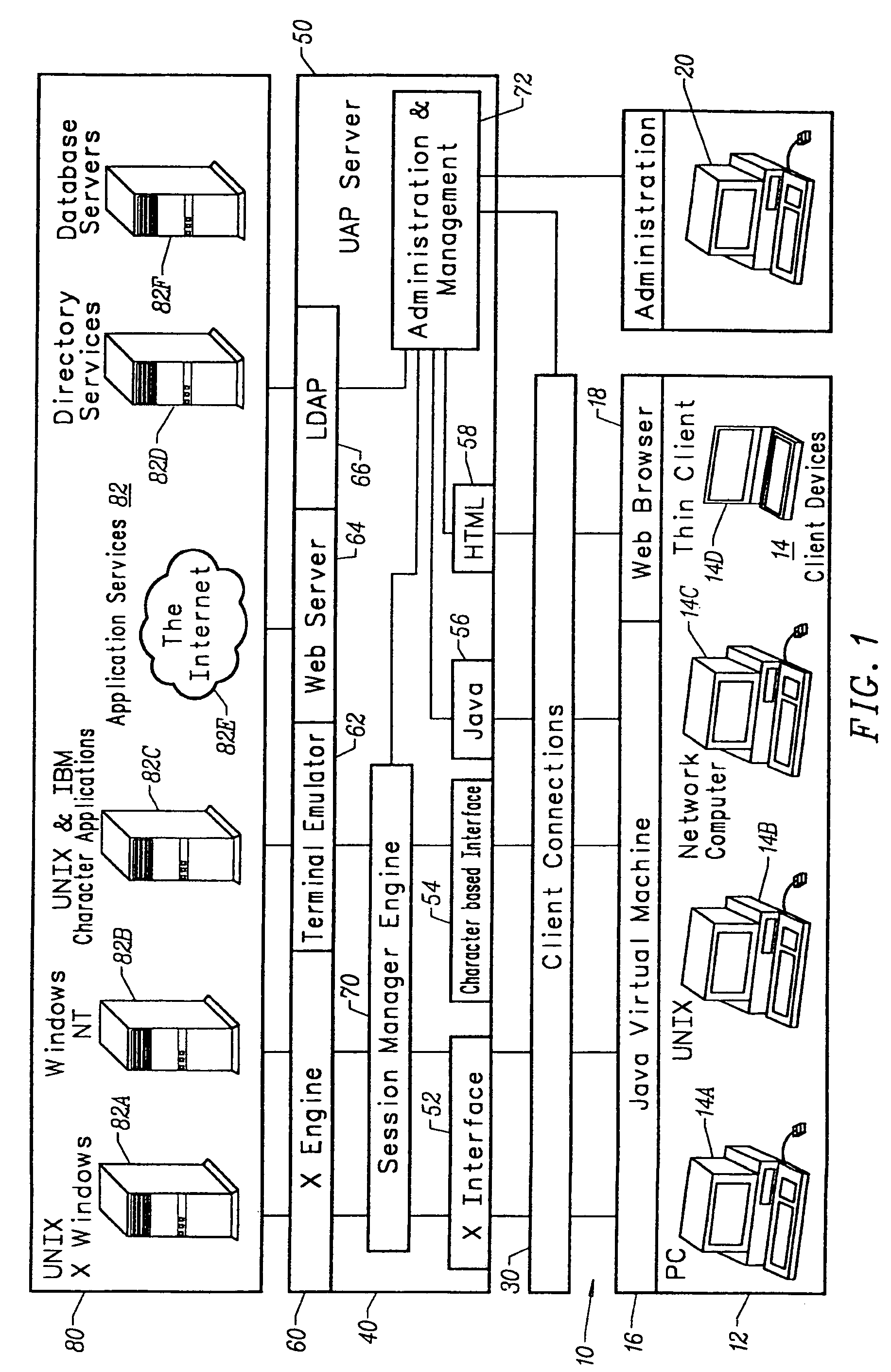Color quality and packet shaping features for displaying an application on various client devices
a technology of packet shaping and color quality, applied in the field of networked data processing environments, can solve the problems of increasing time and money required to maintain these powerful clients, increasing costs to do this, and occupying time and money for slow performance, so as to achieve efficient operation of applications.
- Summary
- Abstract
- Description
- Claims
- Application Information
AI Technical Summary
Benefits of technology
Problems solved by technology
Method used
Image
Examples
Embodiment Construction
Overview of a Universal Application Server System
[0052]As used in this application the term “engine” is used to refer to a process, method or series of related processes or methods for performing certain actions. For example the session engine is a process that is used to control a current session between the server and a client device. Also the same or similar item occurring in more than one figure will carry the same or similar numeric designation.
[0053]As shown in FIG. 1, the network 10 is comprised of three tiers used to illustrate the connections of the various inventive processes and routing of data information among the various processes and components comprising the network. The first tier 12 contains a variety of diverse client devices, generally indicated at 14, having different interfaces, such as PC 14A, UNIX computer 14B, Network Computer 14C, all illustrated as having a Java Virtual machine interface 16 to the second tier 40, or a thin client 14D shown having a browser...
PUM
 Login to View More
Login to View More Abstract
Description
Claims
Application Information
 Login to View More
Login to View More - R&D
- Intellectual Property
- Life Sciences
- Materials
- Tech Scout
- Unparalleled Data Quality
- Higher Quality Content
- 60% Fewer Hallucinations
Browse by: Latest US Patents, China's latest patents, Technical Efficacy Thesaurus, Application Domain, Technology Topic, Popular Technical Reports.
© 2025 PatSnap. All rights reserved.Legal|Privacy policy|Modern Slavery Act Transparency Statement|Sitemap|About US| Contact US: help@patsnap.com



